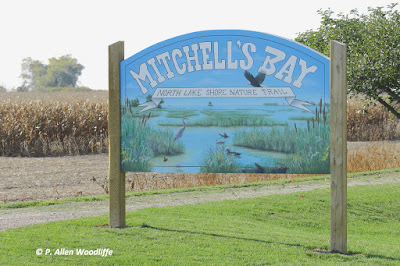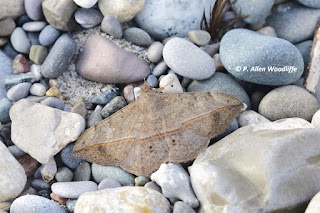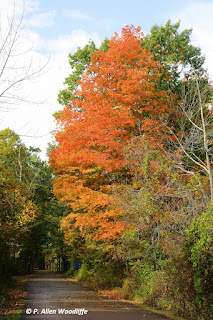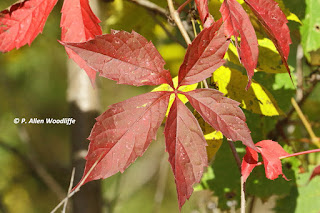Beach dunes are good places to find other animal life. While checking the east beach of Rondeau recently to see if any rare geese were mingling with the hundreds of Canadas resting along the water's edge (there wasn't), I came across a life-and-death struggle. A large Chinese Mantid had found a Woolly Bear caterpillar and was proceeding to chow down on it.
Normally the mantid would not allow me to get this close with my macro lens (I was a mere 8 cm away for a couple of these shots), but she was more interested in the meal than escaping me. It was interesting that the caterpillar was still attempting to escape even though the mantid had a very firm grasp, but this is one Woolly Bear that will not have to wait to see what the winter might bring.
While I was on the sand photographing this mantid in action, a type of Ground-hunting Spider came by.
There wasn't much bird activity at the beach that day, so I ventured into the woods. There weren't many birds there either, so I guess it is clear that the fall migration has passed.
Even though the birds weren't very plentiful, there were other things to see and photograph. Earlier this year I had posted about the Boogie Woogie Aphids which are found on American Beech trees. There are still some around doing their thing.
The change in leaf colour is delayed this year compared with most years. According to visitors to central Ontario, even there the leaves are not as far along as they normally are. These next few shots are images taken at Rondeau in the last day or two. While it appears that there are lots of leaves already on the ground, the predominantly green of the trees indicates that the vast majority of them are still holding on quite successfully.
 |
| Bennett Ave |
 |
| Bennett Ave |
 |
| Rondeau Road |
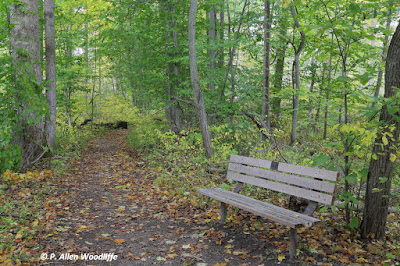 |
| Spicebush Trail |
 |
| Spicebush Trail |
Amidst the leaves on one of the paths of the Spicebush Trail was this large female Eastern Garter Snake. It was in the shade and the ground was cool. The only thing that moved was its tongue as it flicked it in and out trying to determine if I was a threat or not.
Did you see it? Maybe this next photo will make it a bit more obvious.
A year ago, on October 26, some of the same vantage points looked like this:
 |
| Bennett Ave |
 |
| Rondeau Road |
This Hawaiian Beet Webworm moth was spotted on my van's door which was parked at the head of one of the trails. It is apparently an uncommon migrant to this area, the northern part of its range.
Autumn is a great time for seeing the fruiting bodies of fungi on the decomposing logs and stumps.
 |
| Pholiota sp. |
 |
| Turkey Tail |
A stop at one of the local sewage lagoons can add to the day's interest, and one time I stopped at the Ridgetown lagoons. As expected there were several hundred Canada Geese, and after a careful examination, I came across these two blue phase Snow Geese on the water.
They weren't on the water when I first saw them, but at one point something stirred up many of the geese. It turns out that this young Bald Eagle was drifting along right over head, and not all that high up, putting the geese in a bit of a panic. I presume that the geese thought it was safer in the water, so that in case the eagle swooped down, the geese could try and escape by diving under.
There were a few other ducks around, including a couple of dozen Northern Shovelers, most of which which were going through their moult and looking a bit drab.

























